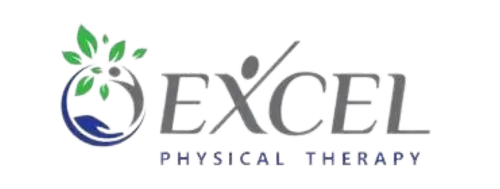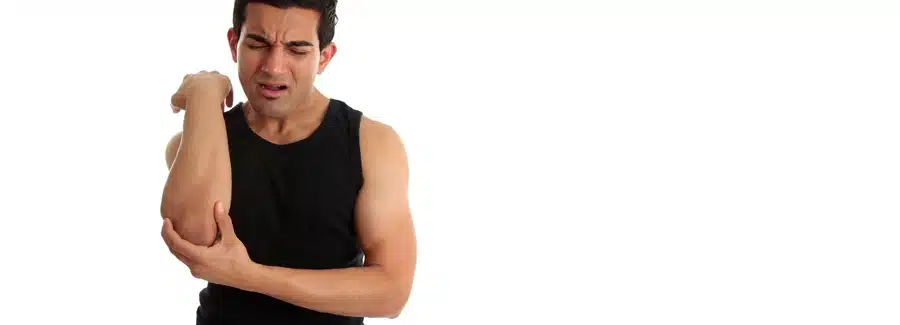Golfer’s Elbow if I Don’t Play Golf?
Golfer’s elbow, also called medial epicondylitis, refers to an inflammation of the medial epicondyle. The medial epicondyle is the bony part of the inside of your elbow where the tendons of the forearm flexor muscles insert. Golfer’s elbow is commonly seen in individuals that play golf, however, despite what the name may suggest, you can still get golfer’s elbow even if you’re not a golfer!
Cause of Golfer’s Elbow
The most common cause of golfer’s elbow is overuse, especially repeated and forceful wrist and finger movements. However, golfer’s elbow can also occur as the result of direct trauma. Golfer’s elbow leads to damage of the muscles and tendons that control movement of the fingers and wrists, leading to inflammation and pain on the inside of the elbow. As the name implies, golfer’s elbow is commonly seen in golfers. It commonly occurs in players that grip or swing their clubs incorrectly. However, other types of athletic activities can put you at risk of golfer’s elbow, including:
Throwing sports – incorrect throwing technique in sports such as baseball, football, javelin, etc. can lead to golfer’s elbow.
Racquet sports – using improper equipment that is either too small, or too heavy, can lead to golfer’s elbow, as can excessive topspin on the ball.
Weightlifting – improper lifting technique, such as curling your wrists during bicep curls, can result in overloading of the muscles and tendons of the elbow and can contribute to golfer’s elbow.
Further, golfer’s elbow doesn’t only affect athletes; any type of repetitive activity that involves the hands, wrists or arms puts you at risk of this injury. Activities such as hammering, raking, typing, and painting can all lead to golfer’s elbow if you do them repeatedly for an extended period of time.
Risk factors for golfer’s elbow include:
- Age greater than 35
- Male
- Obesity
- Smoking
Symptoms of Golfer’s Elbow
Golfer’s elbow can present with a variety of symptoms including:
- Gradual or abrupt onset of symptoms
- Pain or tenderness on the inside of your elbow
- Mild discomfort with elbow movement, that is particularly noticeable when gripping tightly
- Increasing stiffness and soreness of your elbow
- Weakened grip strength
- Numbness and/or tingling in one, or multiple, fingers (usually the ring and baby fingers)
- Certain activities such as hand shaking, turning doorknobs, or any activity that involves grabbing or lifting can be difficult due to pain
Diagnosing Golfer’s Elbow
Golfer’s elbow can usually be diagnosed with a thorough history and physical examination of the area by a trained physical therapist at Excel Physical Therapy. However, in some cases your therapist may recommend an x-ray to ensure that there’s not an underlying fracture that is causing your symptoms. In rare instances, more advanced imaging techniques, such as MRI, may be used to evaluate your condition.
Treatment Options for Golfer’s Elbow
If you’ve been diagnosed with golfers elbow, you’ll want to start treatment with a physical therapist as soon as possible so that you can get back to your sport (or your normal life) as quickly as possible. Further, if golfer’s elbow is left untreated, it can lead to chronic elbow pain, reduced range of motion, and in some cases, a permanent contracture of the elbow. So, where should you begin?
The first thing that is recommended is rest. Whether it’s golf that has irritated your elbow, or some other repetitive activity, it’s important to take a break and allow your elbow to heal. Returning too early can actually make your condition worse. It is also recommended that you ice the affected area for 15 to 20 minutes at a time, several times a day for a few days to help minimize pain and swelling in the area. After the first three days, you can switch to moist heat on the area for 20 minutes at a time to help improve blood flow to the area.
Your physical therapist may perform manual therapy on your arm, as well as use modalities such as ultrasound and/or interferential therapy to help encourage healing. They will also teach you stretching and strengthening exercises for the affected area. Additionally, they will show you how to reduce load on the tendons of your elbow when you return to your activities. Once your pain is eliminated, your physical therapist will guide you on gradually returning to your usual activities, and will also suggest modifications that you can make to your activities to minimize your risk of re-injury.
Preventing Golfer’s Elbow
In some cases, golfer’s elbow can be prevented by following some simple tips from your physical therapist, including:
- Strengthening the muscles of your forearm
- Stretching before activities that involve repetitive movements
- Using proper form (ask an expert to evaluate your technique and make necessary changes)
- Using appropriate equipment
- Lifting properly
- Knowing when to take a break (with the first twinge of elbow pain, take a rest!)
If you’ve been suffering with medial elbow pain and thought it couldn’t be golfer’s elbow because you don’t play golf, you may want to consider seeing a physical therapist to get evaluated. Whether your golfer’s elbow was caused by golf, or by some other repetitive activity, the physical therapists at Excel Physical Therapy can help to get you back to your regular activities quickly.



